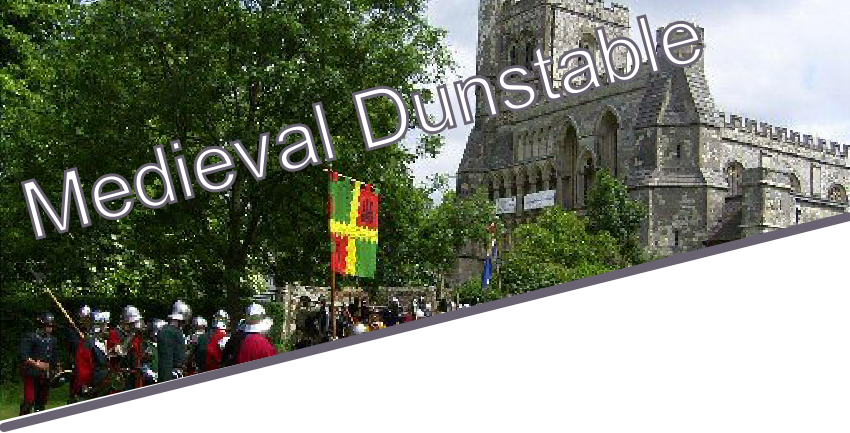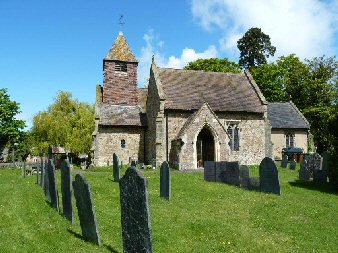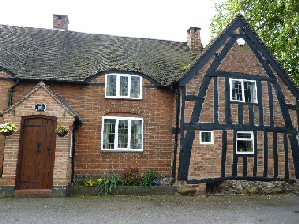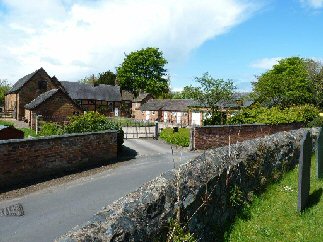
Medieval Dunstable© Webmaster Helen Mortimer Privacy Policy | Terms of Use



Churches and Lands
Leicestershire
Click this link for an interactive map of the counties, towns and villages.
Cadeby and Lutterworth - Jean Yates
After 1066, William the Conqueror gave the village to Hugh de Grantmesnil who passed it to his retainer Ivo.
In the reign of Henry I, 100-1135, Ivo fell from grace and asked Robert de Beaumont, Earl of Leicester, for help in paying a fine. Robert de Beaumont held Ivo’s land as security. Ivo died on a pilgrimage to the Holy land and the estate remained in Beaumont’s possession. In 1131 de Beaumont wanted to make a grant of Cadeby to the church to help one of his retainers join St Peter’s priory of Dunstable but the plan was contested by the resident de Cateby family, thought to be descendants of Ivo. The matter was not settled until 1253 when Hawise de Cateby renounced her claim for the village, in favour of a cottage and 15 acres of land.

In 1279 records show that the village was divided between the Prior of Dunstable, five freemen, Richard de Cateby and Nicholas de Seagrave, whose overlord was Richard de Harcourt, lords of Bosworth.
The last of the de Catebys died in the 1400s leaving their estate to Leicester Abbey.
John Howard, Duke of Norfolk, is said to have spent the night before the Battle of Bosworth at Cadeby Hall in 1485. His men camped on land now owned by Manor Farm where one field is still known as Norfolk’s meadow.1
Dunstable Priory Charters and Annals give us a few details to add to the above.
Charters 248-50; 1131-1141, Morinus de Pinu ‘gave the land at Catebi’ (Cadeby). because (the canons) have received him into their fellowship by the counsel of his (over)lord The Count of Meulan’.
Morin of le Pin was Waleran’s steward and he was left as guardian of his castle while Waleran was fighting elsewhere. He held the castle and only surrendered when he was told to by Waleran. Henry I blamed him for allowing/encouraging the teenage count to rebel and banned him from the North.
 King Stephen at Waleran’s urging pardoned Morin and allowed him back . He ended his days at Dunstable Priory 2
King Stephen at Waleran’s urging pardoned Morin and allowed him back . He ended his days at Dunstable Priory 2
Further research uncovered that some years previously the young count had rebelled against King Henry I and had spent three years in a dungeon! Morin, a much older man, held his castle for him and was banned from Normandy and England. King Stephen had released the count who persuaded him to allow Morin to come to England.
The Cateby family took the Priory to court on a number of occasions concerning the gift and in 1247 the annals tell us,” We returned from Northampton quit of Gocius’ claim by a charter which we proved to be true by witnesses summoned to it and by twelve free, law-worthy men, six from the vineyard at Cateby and six from the vineyard at Dunstable.”
I believe the vineyard was situated in the four acre, south facing, sloping field behind Church Farm.
In 1253 Hawisia Cateby gave up her claim in return for a cottage and land and paid rent of two shillings a year to Dunstable.
 A Charter dated 1221/40, states that ‘the Canons have 10 virgates (300 acres) and Hugh de Segrave the other ten.’ An agreement about ploughing at the same time mentions Boseworth in the list of fields!
A Charter dated 1221/40, states that ‘the Canons have 10 virgates (300 acres) and Hugh de Segrave the other ten.’ An agreement about ploughing at the same time mentions Boseworth in the list of fields!
In the 1535 Valor Ecclesiasticus, Henry VIII’s valuation of the monasteries, Cadeby appears as still belonging to Dunstable Priory. There is also a mention of value in land at Lutterworth. The total value of all things spiritual and temporal was £42 .
Hence Dunstable retained the manor of Cadeby for more than 400years.
Reference:
1From the Cadeby village Millenium Celebration Booklet
2 Hollister’s K John’s biography & David Couch ‘The Beaumont Twins, the roots & branches of power in the 12thC.
| Archaeology |
| Audio Guides |
| Education |
| Exhibitions |
| Events 2013 |
| Physic Garden |
| Priory History |
| Priory Churches / Lands |
| Town History |
| Virtual Tour |
| Website |
| Archaeology |
| Charters & Bylaws |
| Eleanor Cross |
| Famous People |
| The Fraternity |
| Friary |
| Guided Tours |
| History |
| Inns |
| Dunstable Treasures |
| Kingsbury |
| Middle Row |
| Royal Visits |
| Sheep & Wool Trade |
| The Town |
| Friary Archaeology |
| Bone Study |
| Friary |
| Annals Charters Valor Ecc |
| Archaeology |
| Churches and Lands |
| Guided Visits |
| Audio Guides |
| History |
| Monastic Life |
| Virtual Tour |
| The Augustinian Priory |
| The Canons Route |
| Bedfordshire |
| Buckingham |
| Derbyshire |
| Nothamptonshire |
| Hertfordshire |
| Leicestershire |
| Oxon |
| Priors |
| Annulment |
| History |
| Archives |
| Book Sales & Shop |
| Exhibitions |
| Guided Walks |
| Heritage Talks |
| Physic Gardens |
| Schools |
| Tourist Information Centre |
| Tea-room |
| Visits |
| Priory House Heritage Centre |
| Education |
| Knight |
| Search Results |